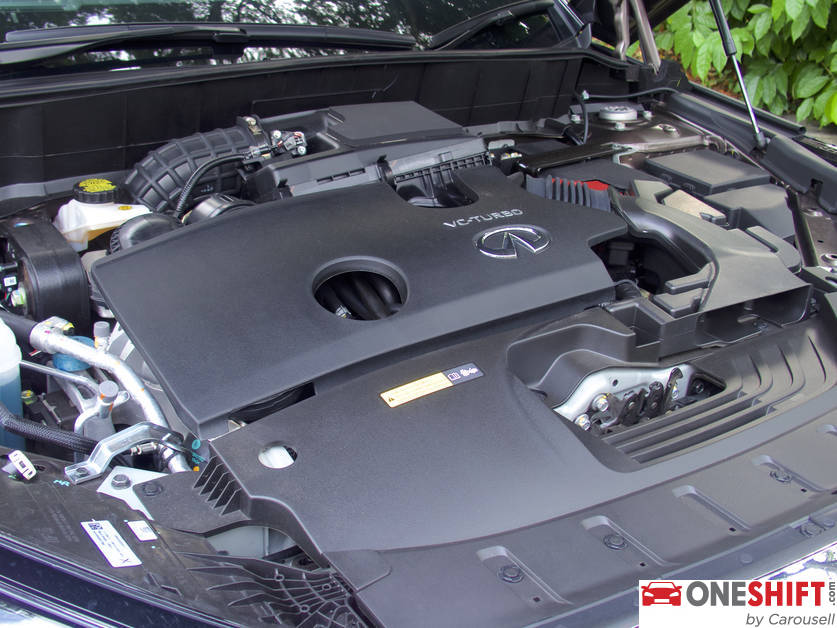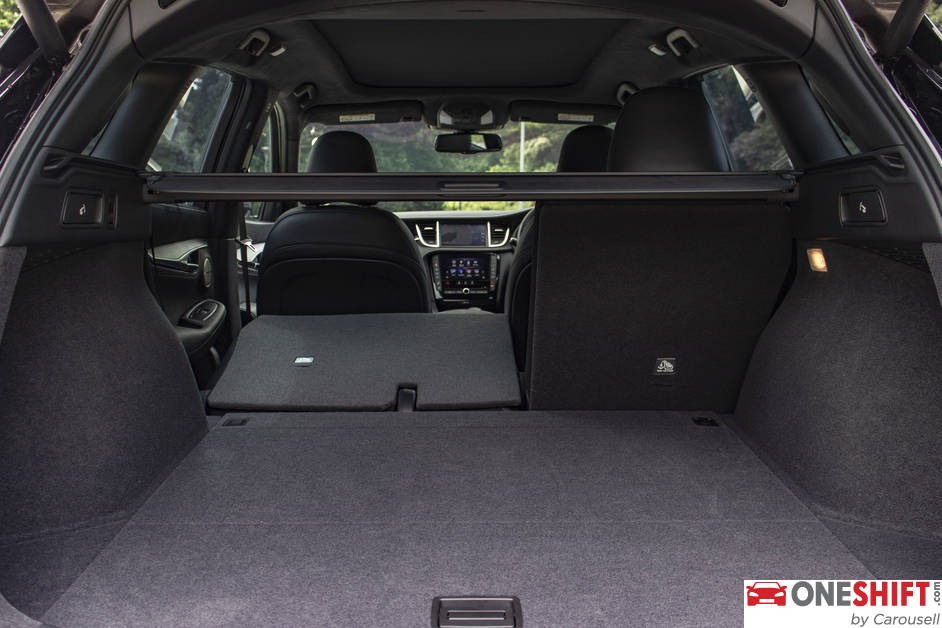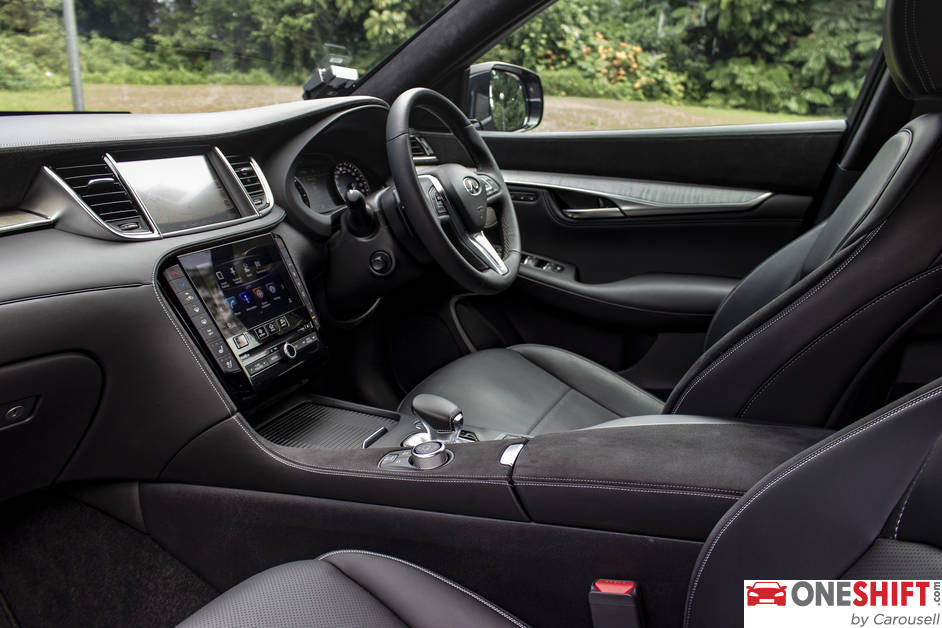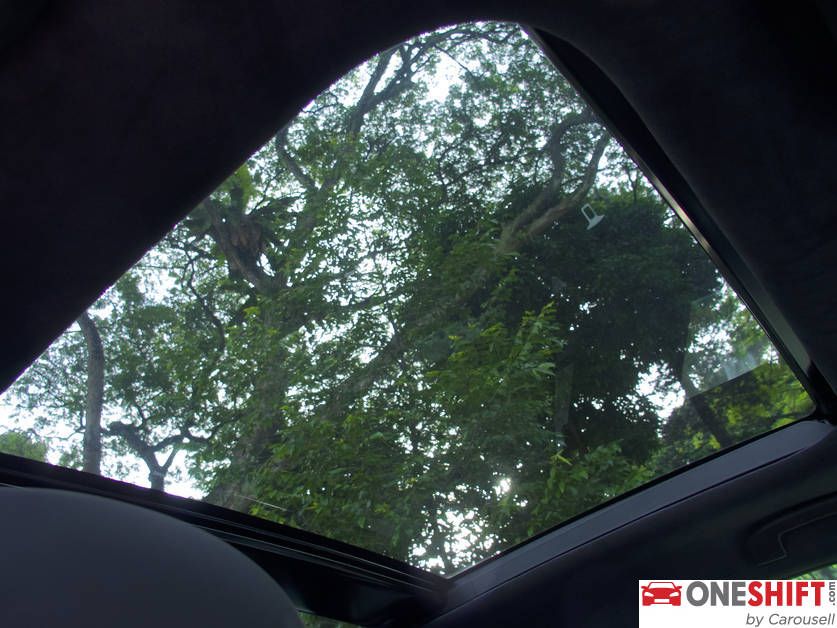Have Your Cake and Eat It
The QX50 is a technologically-advanced premium SUV that delivers loads of power and torque whilst still offering decent fuel efficiency.

Infiniti has described their QX50 as a “premium SUV with world-first technologies, stand-out design and unrivalled interior space”, a description that we feel is certainly apt.

Since our first encounter with the Infiniti QX50 Sensory AWD in March 2019, we've been impressed with the technological wonder of Infiniti's Variable Compression Turbocharged (VC-T) engine.

In case you haven't heard, the QX50 is the first car to be powered by Infiniti's state-of-the-art Variable Compression Turbocharged two-litre engine. What's so special about this engine? It is the world's first production-ready variable compression ratio engine. The QX50's VC-T engine is able to vary compression ratios between 8:1 (for high performance) and 14:1 (for high efficiency). Why is this a big deal? Because with this engine, you basically get the power of a 2.0-litre turbocharged petrol engine with the torque and efficiency of a four-cylinder diesel engine. Who says you can't have your cake and eat it? This is a car that can be both powerful and fuel-efficient.

Our review model is the Infiniti QX50 2.0 VC-T Sensory with ProACTIVE. The difference between this car and the previous QX50 2.0VC-T Sensory that we reviewed is that this car comes with a whole host of intuitive safety-oriented technologies — collectively called the ProACTIVE Safety Package.

So what do you get with the ProACTIVE Safety Package? It includes Intelligent Cruise Control, Cross Traffic Alert, Distance Control Assist; Back-up Collision Warning and Intervention, Predictive Forward Collision Warning; Blind Spot Warning, and Forward Emergency Braking with pedestrian detection.

I also like the car’s Head-Up Display (only available on QX50 Sensory with ProACTIVE) that displays information on a 9.0-inch area on the windscreen. The display is clear and sharp without being too intrusive or distracting.

Another 'cool' feature of the car is its Remote Engine Start System (only available on the Sensory and Sensory with ProACTIVE variants) that allows you to start the engine remotely using the Intelligent Key. Very useful when you've parked the car in the open on a hot day as you'll be able to start cooling the cabin down before you get in.

Also useful is its Motion Activated Liftgate function that opens the tailgate automatically when you wave your foot under the rear bumper — a 'handy' feature when you have your hands full. The tailgate can also be opened remotely, either from the driver's seat or by pressing a button on the key fob (only available on the QX50 Sensory and Sensory with ProACTIVE variants).

Features-wise, the only complaint I have is that it lacks the very useful Intelligent Park Assist feature that comes with the smaller Infiniti QX30 that we tested previously. With the QX50 being a much bigger car than the QX30, the Intelligent Park Assist would have been helpful for those that aren’t confident parking this massive SUV.

At a glance, the QX50 looks huge and imposing. And with its 20-inch wheels, the car has a striking presence that looks both commanding and confident.

The QX50 has a class-leading boot capacity of 881 litres; much bigger than the Audi Q5 (550l), BMW X3 (550l), Lexus RX (453), Mercedes Benz GLC (550) and the Volvo XC60 (505l). Fold the 2nd-row seats down, and the cargo volume of the QX50 expands to 1,823 litres!

Inside the cabin of the QX50 is where you can really sense and feel the quality of its build. The leather on the dash is beautifully hand-wrapped and stitched over the edges of the panels. Personally, I also like that the QX50 comes finished with genuine, matt-finish open-pore maple wood. Much better than the high-gloss wood surfaces that some other premium car manufacturers use.

You get lots of screen real-estate with the QX50. In the centre console, there's an 8-inch upper touchscreen that displays navigation and system information. Below that is another 7-inch touchscreen that displays your apps, climate control and entertainment functions.

Between the speedometer and tachometer, there's another instrument gauge screen that shows key driving info and it also displays what the VC-Turbo's is doing — whether it is trying to help you extract more power or to improve fuel efficiency.

You can interact and navigate through the options on the two touchscreen displays using the INFINITI Controller, a dial that sits on the middle armrest.

With the car's hefty size, drivers will appreciate its Around View Monitor feature that provides a 360-degree overhead view of the area around the QX50. Other than the birds-eye view, the AVM can also display a 'curb-level' view that's useful for helping drivers avoid getting scratches and dents from high curbs.

The QX50 comes with a 16-speaker Bose® Performance Series sound system that includes an amplifier, a high-quality sound processor, tweeter speakers and a custom-built enclosure that houses a pair of high-excursion Nd® Richbass woofers. It all 'sounds' really good on paper, but I was disappointed with the sound system. Sound reproduction was very so-so and barely competent in my view.

The QX50 also has dedicated air-con vents for passengers in the backseat, and they can also control their preferred temperature settings. But another 'cool' feature of the QX50 is the car's ventilated front seats that provide air-con cooling straight to the bum area! It's certainly a nice feature on a hot day, but you do get a fair bit of noise from the fan that powers these ventilated front seats.

The VC-T engine on the QX50 delivers 268hp of power and 380Nm of torque. These numbers are impressive, especially when compared to similar 2-litre variants of the Audi Q5 (252hp, 370Nm), BMW X3 (184hp, 290Nm), Lexus RX (234hp, 350Nm), Mercedes Benz GLC (184hp, 300Nm) and the Volvo XC60 (250hp, 350Nm).

The QX50’s single-scroll turbo powers the car from 0 to 100kmh in a respectable 8.3 seconds while still delivering a decent fuel economy of 11.5km/l (8.7L/100km).

Using the car's Drive Mode Selector (DMS), drivers can select different driving modes to choose their preferred engine torque output, transmission shift points, steering ratios and steering effort. Drivers can choose from four different driving modes: Standard, ECO, Sport, and Personal.

Our test QX50 comes with an "Intelligent All-Wheel Drive system" (available on the Sensory and QX50 Sensory with ProACTIVE) that's able to switch between two-wheel drive (to provide efficiency) and all-wheel (when the driver requires better traction). However, in terms of handling, I fully agree with OneShift editor Clifford Chow's view that, "Its steering does come across as a little vague, and if you were to enthusiastically pitch it into a turn, the Infiniti will wallow quite a bit".

I have never been a fan of cars with continuously-variable transmissions (CVT), and unfortunately, the QX50's XTRONIC 'shift-by-wire' system doesn't impress me. The benefits of CVT is that it gives you super-smooth gear shifts and seamless power delivery because technically, you can have an infinite number of gear ratios. Some people like this but I've always found CVT to feel a little strange.

The QX50 has ventilated disc brakes on both axles that feature a tie-rod system that reduces the need for higher brake pedal pressure. The brake booster is able to apply maximum brake force when it detects a firmer push on the pedal.

For those that are pedantic about engine noise, the QX50 has an Active Torque Rod (ATR), the world's first active engine mount vibration damping system that helps to reduce engine noise. The ATR has a G-sensor that detects vibrations, and it then creates opposite, reciprocating vibrations, to reduce engine noise.

The QX50 is certainly a premium SUV and tech-wise, it can boast of world-first technologies like its VC-T engine and ATR vibration damping system. Against its rivals, it also trumps them in terms of power, torque and interior space.

And if you are planning to get a QX50, then we'd definitely recommend paying the additional S$10,000* to get the VC-T Sensory with ProACTIVE variant that offers many additional safety-oriented features. At S$226,800*, the QX50 VC-T Sensory with ProACTIVE is an excellent option for anyone considering a premium SUV that gives you loads of power and torque whilst still offering decent fuel efficiency. It’s the car that lets you have your cake and eat it too.
*All information accurate as at 28 July 2019
Credits: Words by Khim Yap. Photos by Khim Yap and Clifford Chow








Get the Best Price for your used car
from 500+ dealers in 24 hours

- Convenient and Hassle-Free
- Consumer Protection
Transparent Process
With No Obligation


